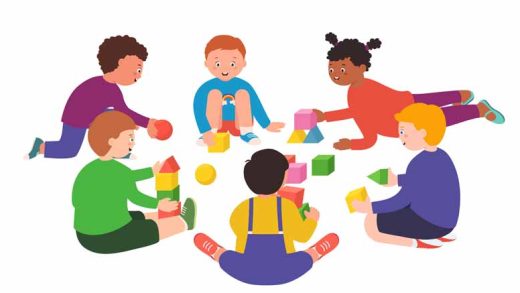Forests are important ecosystems that are fundamental to our world’s health. This article aims to educate young readers about the fascinating world of forests. We’ll discuss what forests are and the many kinds of forests that may be found everywhere. We’ll find out why they matter to people and the environment.
Forests are filled with life and wonder, from massive trees to a wide variety of creatures. Through gaining more knowledge of forests, children can see their beauty and discover the important roles they play.
So, let’s go on a thrilling forest adventure!
What is a Forest?
So, what is a forest? A forest is a piece of land with many trees. Forests are essential for the survival of many creatures. There are forests everywhere on the globe, and there are a variety of plants and animals that form an ecosystem.
Rainfall and temperature are the two factors that most affect forests. Woods can be found from the equator to the polar regions. However, the types of forests differ according to climate. Conifers flourish in cold regions, although flowering plants make up most of the forests in temperate and tropical zones. Different rainfall also creates different types of forests. That’s why deserts lack forests. The only trees found there are a few spread all over areas where their roots may reach the water below.
Different Types of Forests
Forests can be divided into 5 main categories, depending on the types of trees found in them. Here are the 5 different types of forests:
- Coniferous Forests – As the name says, these woods are mostly made up of trees that bear cones, like spruce, pine, fir, and hemlock. Most of these can be found in the northern parts of Asia, Europe, and North America.
- Deciduous Forest – The trees of these forests are broadleaved and shed their leaves between late summer to early autumn. The leaves start green, but over time they turn yellow, red, and orange. These forests are in North America, Western and Central Europe, and Northeastern Asia. It is in all the places where it gets cold in the winter and warm in the summer.
- Mixed Forests – Both coniferous and deciduous tree species mix to form mixed forests. These are mostly found in hilly regions. You can find them almost anywhere in the globe.
- Mediterranean Forests – Because of the perfect temperature for the growth of short oaks and pines, Mediterranean forests are also known as scrublands. They are home to many different kinds of wildflowers and insect-eating birds. Another name for this woodland is “maquis.”
- Tropical Rainforest – These forests are found in hot climates in regions like Australia, Asia, Africa, and South America. As a result, they are known as tropical. They are known as rainforests because of the year-round precipitation. They serve as homes for a variety of insects, bright birds, and animals.
Different types of forests are important to the global ecology because they support human livelihoods, provide habitats for animals, and control the temperature.
Importance of Forests
It’s very important to talk to kids about the importance and benefits of forests and trees and the effects of climate change and deforestation.
- Absorb Greenhouse Gases – The ecosystem is maintained by forests. They take in greenhouse gases like carbon dioxide which is the reason for climate change. The biomass found in tropical forests alone contains over a quarter of a trillion tonnes of carbon. It would be deadly to release into the sky.
- Give a Natural Habitat – Millions of various types of creatures, such as crocodiles, snakes, turtles, birds, insects, butterflies, monkeys, and other wild animals, can survive in the environments that forests offer. Many microbes that are necessary to transform dead stuff into nutrients are found on the forest floor.
- Purify the Air – Plants use photosynthesis to produce food and energy. They release oxygen into the environment and take up carbon dioxide. Similar to huge lungs, forests remove carbon dioxide and keep the oxygen we breathe in balance.
- Economic Benefits – The importance of forests for humankind are a lot. Every part of a tree—leaves, branches, stems, bark, fruits, seeds, and roots—has some kind of use. Rich in raw resources, wood, lumber, fruits, and vegetables of great economic worth are forests. We rely on trees for everything from building materials to furniture manufacturing, paper, rubber, and green waste generation.
- Medical Benefits – There are many medicinal plants and herbs found in forests. In contrast to chemicals, these plant trees’ seeds, leaves, and bark extracts are non-toxic and may be used to cure a variety of illnesses. Quinine, pink periwinkle, wild yams, curare, willow tree extracts, and calabar bean are a few of these medicinal plants.
Interesting Facts about Forests
The wonders of forests are limitless! These are a few interesting facts about forests:
- More than 80% of all animal, plant, and insect species in the world are found in forests. These creatures support the health of the forest. Elephants, for instance, share the seeds of the fruits they consume. The seeds enter their stomach, release undigested in their waste, and grow in the earth.
- Forests can make rain. Rivers found in or near forests provide more than three-quarters of the freshwater that is available worldwide. Forests produce rain by releasing a large amount of soil-based water into the sky.
- Although the exact number of tree species on Earth is unknown, experts believe that there are around 63,000 recognised species. Up to 9,000 tree species may still be unknown to science.
- Approximately 18.7 million acres of forest are lost annually on Earth.
- Deforestation results in the emission of carbon dioxide, which raises global temperatures and causes climate change.
Understanding forests is important for children’s education and ecological awareness. Teaching kids about forests promotes a feeling of responsibility for the environment and fosters sustainable habits. Through engaging learning experiences, children understand the need to protect these essential ecosystems for future generations.
Enrol your kids at Kangaroo Kids International Preschool to provide them with the best educational experience. For admissions, contact us today!









